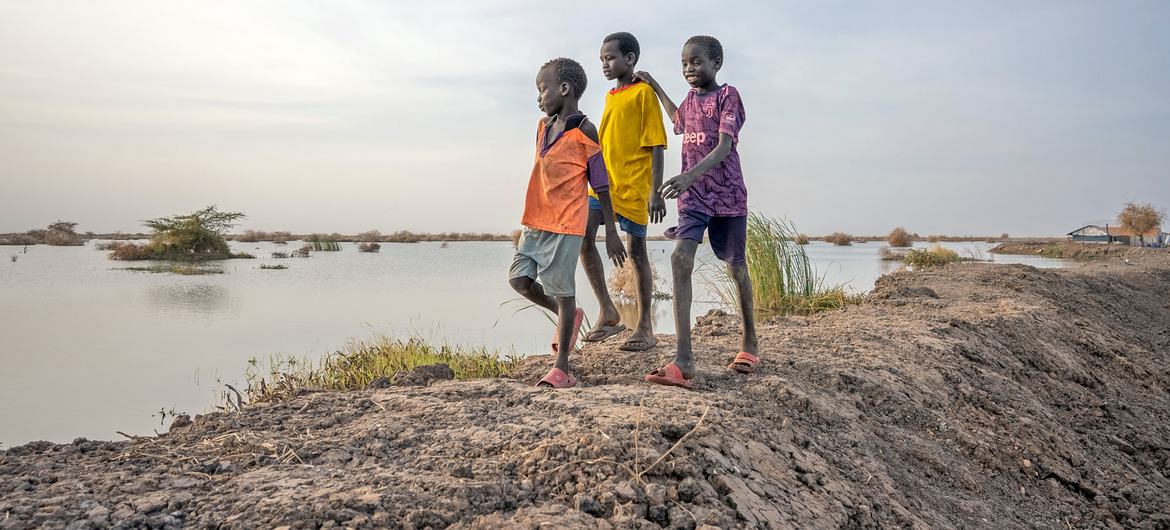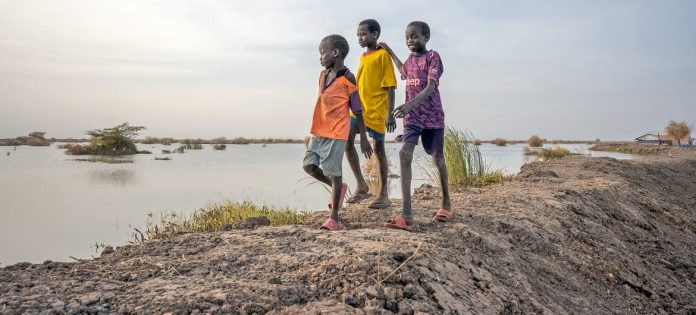The UN World Food Programme (WFP), World Health Organization (WHO) and UN Children’s Fund (UNICEF) have raised the alarm over worsening hunger, malnutrition, and disease outbreaks in the world’s youngest nation.
WFP warned that the food situation in South Sudan has reached critical levels, with more than half of the population already facing “crisis-level” hunger – classified as at least IPC3 on the five point global food insecurity scale.
Exacerbating the situation is that the UN food agency has no funds to preposition supplies for next year, as it also faces challenges accessing communities in need due to seasonal road closures and prohibitive costs associated with airlifting aid.
“WFP currently has no food supplies in South Sudan to preposition for next year’s humanitarian response,” said Shaun Hughes, WFP acting Country Director for South Sudan.
He added that the country’s limited road networks are impassable for much of the year, particularly in regions with the highest levels of food insecurity.
“Airdrops are always last resort for WFP. Every dollar spent on planes is a dollar not spent on food for hungry people. But there is a simple solution: get food to communities by road before they are cut off by heavy rain and flooding.”
Complicating factors
The country’s hunger crisis is compounded by several factors, including high food prices, economic instability, ongoing conflict, and an influx of refugees from neighbouring Sudan, where conflict between Government troops and a powerful rival militia is also escalating.
Severe floods have not only destroyed crops but also displaced entire communities, leaving them dependent on humanitarian assistance to survive.
WFP’s current resources have only managed to reach 38 per cent of those in need during 2024’s lean season, with most recipients receiving half-rations.
Cholera outbreak
In addition to the food crisis, South Sudan is grappling with a cholera outbreak in Renk county, a key entry point for refugees and returnees fleeing conflict in Sudan. As of late October, health authorities have reported 50 suspected cholera cases, with six confirmed, among refugees, returnees, and the local community.
The outbreak is fuelled by overcrowded living conditions and limited access to clean water and sanitation which threatens to spread as the flood-displaced population grows.
In response to the outbreak, South Sudanese health authorities, supported by WHO, have activated a cholera task force to coordinate containment efforts. It also established two treatment units, a 10-bed facility at Renk Civil Hospital and a smaller one at Wunthou, a key entry point.
WHO has also deployed rapid response teams consisting of state coordinators, epidemiologists, water, sanitation and hygiene (WASH) experts, and infection prevention specialists. It also delivered 12 metric tons of emergency health kits to Renk, sufficient to treat 74,000 people, including cholera-specific supplies.
“WHO is committed to supporting the South Sudanese Ministry of Health in enhancing disease surveillance, improving response coordination, and ensuring the availability of medical supplies,” said Dr. Karamagi.

Boys walk past flooded fields in Bentiu, Unity state, South Sudan.
Children at risk
Children under five are especially vulnerable in South Sudan’s growing crisis, facing high levels of malnutrition and limited access to basic services.
UNICEF recently screened 1,800 under-fives for malnutrition at entry points in Greater Bahr el Ghazal, finding 485 malnourished, including 150 severely malnourished.
In response, UNICEF has been providing essential clean water services to an estimated 40,000 people in flood-affected areas, helping reduce waterborne disease risks.
Additionally, the agency supported the enrolment of over 3,000 returnee and refugee children into local schools in Renk, Kodok and Malakal, while 216 children attend basic English classes at the Renk Transit Centre, an effort aimed at supporting the integration of displaced children into host communities.

